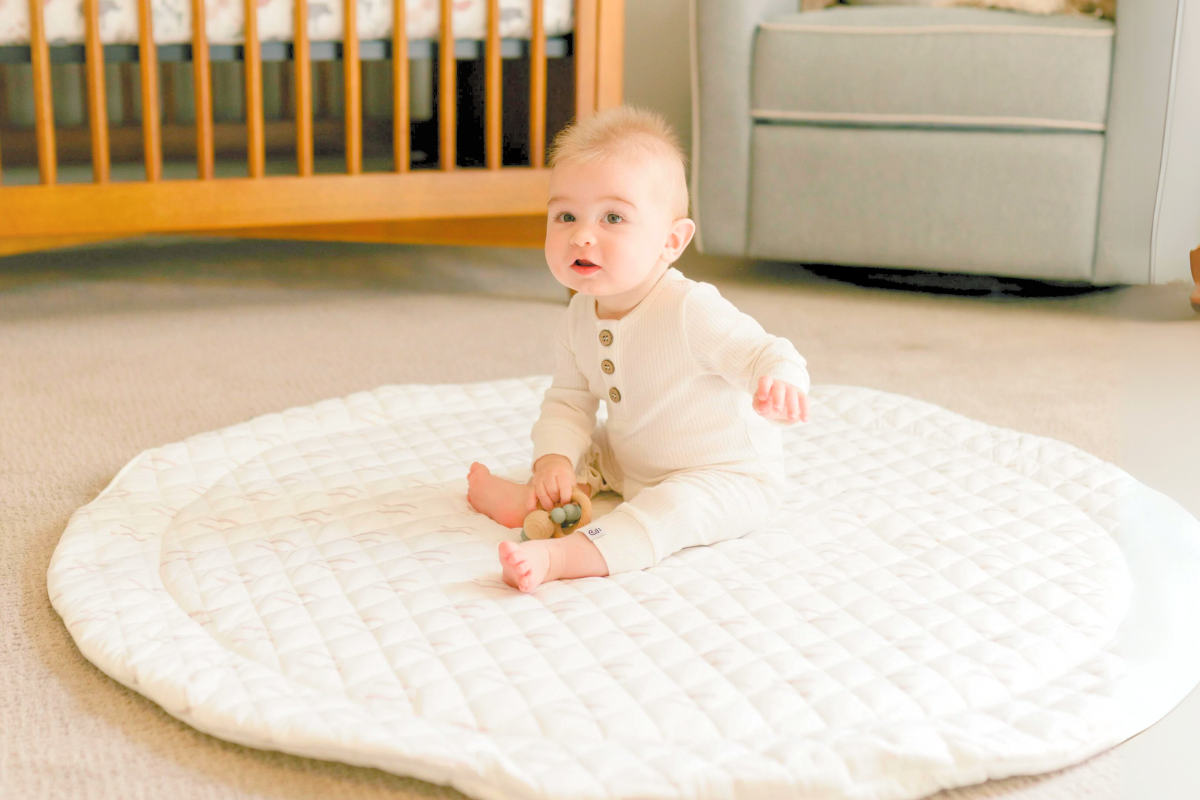Understanding Infant Play Spaces: A Guide for Parents
Got a little one who’s starting to become more adventurous? Looks like your baby’s world is about to get a whole lot more exciting! Cue the baby playmat – this simple but powerful tool makes tummy time fun and safe.
But do babies need a play area, truly? Well, not only does it provide a cozy space for your baby to explore, but it also gives them the freedom to develop their motor skills and sensory experiences. Play area are often paired with a baby activity gym to enhance engagement during playtime, making them even more beneficial for your baby's development.
So, if you’re a fan of Montessori-style unstructured play or just need a place to safely park your mini-explorer, we’re here to guide you.
Do Babies Need a Activity Space?
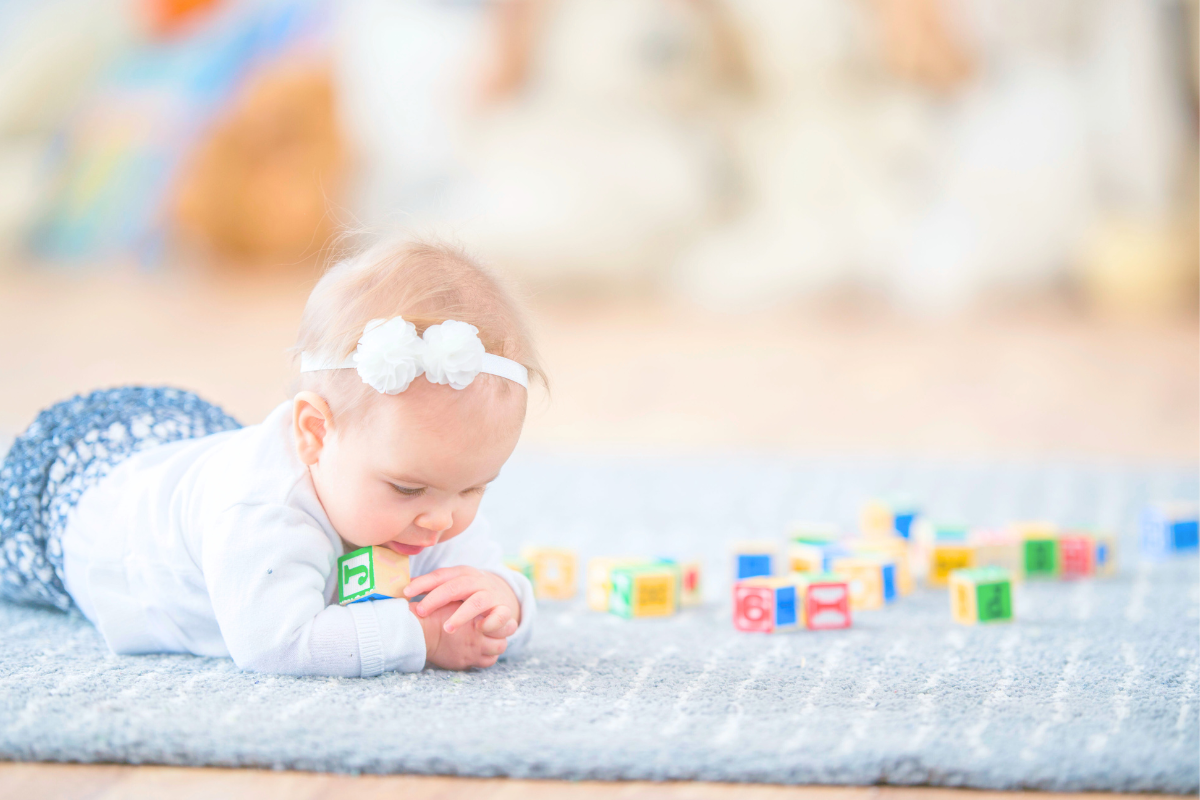
Babies don’t technically need a activity space, but it’s one of those things that makes life a whole lot easier (and cleaner). A play area provides a safe, comfy spot for all those wiggles, rolls, and tummy time sessions, helping your baby develop key skills without you worrying about every bump and fall.
Here are a few reasons why activity space are a solid choice:
-
Promote motor skills development. Play areas create a soft surface for tummy time and early movement, helping build muscle strength in a safe environment.
-
Provide a safe play zone. You can rest easy knowing your baby is exploring on a clean, cushioned surface instead of the hard floor or a dusty rug.
-
Boost sensory exploration. Fun textures and interesting patterns engage your baby’s senses, supporting early cognitive and sensory growth.
-
Encourage independent play. A play area gives your little one the space to roll, crawl, and interact with toys, helping them explore and grow at their own pace.
-
Easy cleanup for parents. Many play area are waterproof or machine-washable, making them a practical option for keeping your baby’s play space clean and hygienic with minimal effort.
The Importance of Tummy Time

Tummy time is one of the most important activities for your baby’s early development. It helps strengthen muscles, improve motor skills, and prepare them for big milestones like crawling and walking.
But let’s face it, tummy time can be a bit of a challenge at first. That’s where baby play area come to the rescue, offering a soft, fun, and engaging space for your little one.
Here’s why tummy time is essential, and how play area can make it more enjoyable:
-
Builds neck and upper body strength. Tummy time strengthens your baby’s neck, chest, and upper body muscles, which are key for lifting their head, rolling, and crawling.
-
Encourages fine motor development. As babies push up and bear weight on their hands, they’re improving hand strength, setting the stage for gripping and other fine motor skills.
-
Prepares for gross motor skills. Tummy time helps your baby practice movements that will eventually lead to crawling, sitting up, and walking.
-
Keeps babies with baby gyms more engaged. Pairing something like Poppyseed Play's baby gym adds hanging toys and shapes that encourage your baby to reach, bat, and play, extending their tummy time sessions.
-
Lays the foundation for future milestones. All this time spent on their tummy prepares your baby for major baby milestones like crawling, walking, and beyond.
Applying Montessori to Baby Activity Areas
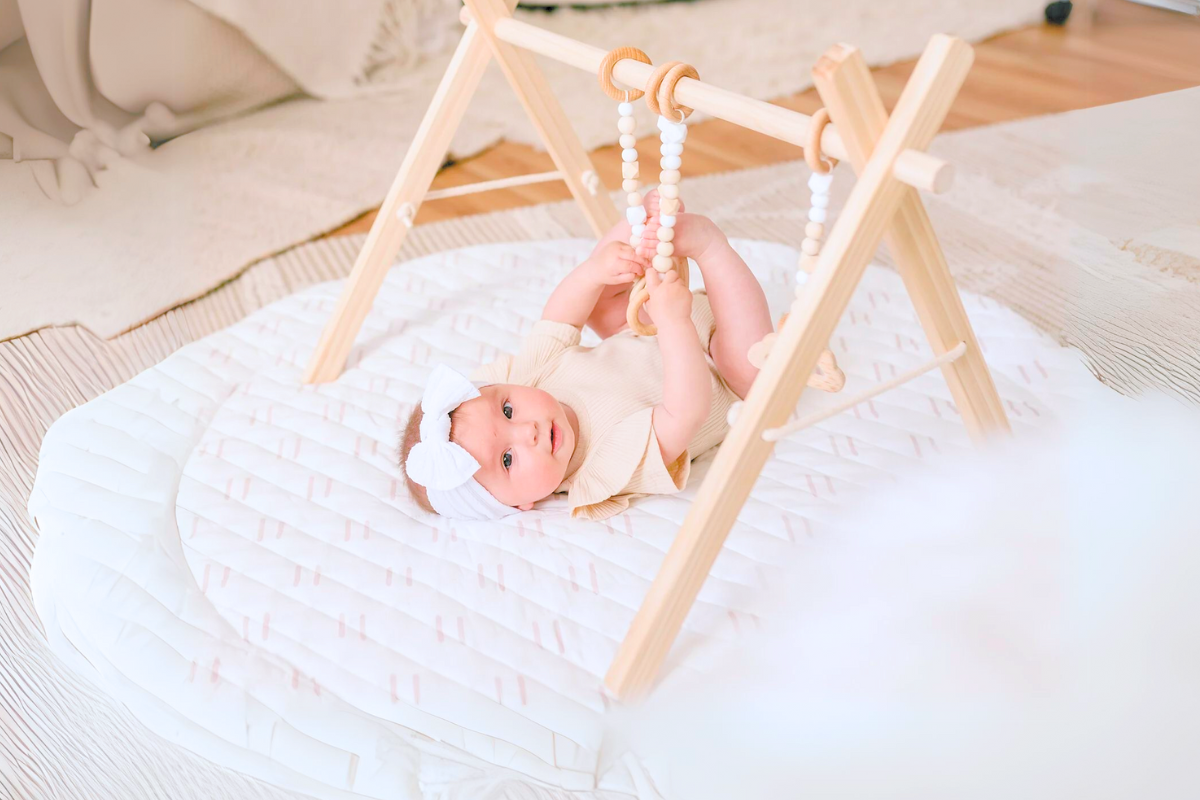
Maria Montessori’s philosophy revolves around allowing naturally curious children the freedom to explore and learn through self-directed play.
Incorporating furniture like Montessori beds, Montessori shelves, and a Montessori baby activity gym encourages independence from the very beginning, allowing even the youngest children to engage in unstructured movement.
So, if you want to create a comfy environment that supports free movement, we recommend following the Montessori method. This setup not only nurtures physical skills but also stimulates cognitive and sensory growth. Allowing babies to explore on their own terms foster a sense of independence – the heart of Montessori philosophy.
Baby Movement and Play Surface Types
When it comes to baby play area, parents are spoiled by choice. From natural fibers like linen and cotton to more synthetic choices such as foam, rubber, and airmats, each type has its own benefits.
Some mats even come with an integrated play gym for added engagement, featuring overhead structures that hold hanging toys to stimulate and entertain infants. Here's how you can pick the best activity space for your baby’s playtime adventures.
Soft Linen Activity Spaces for Babies
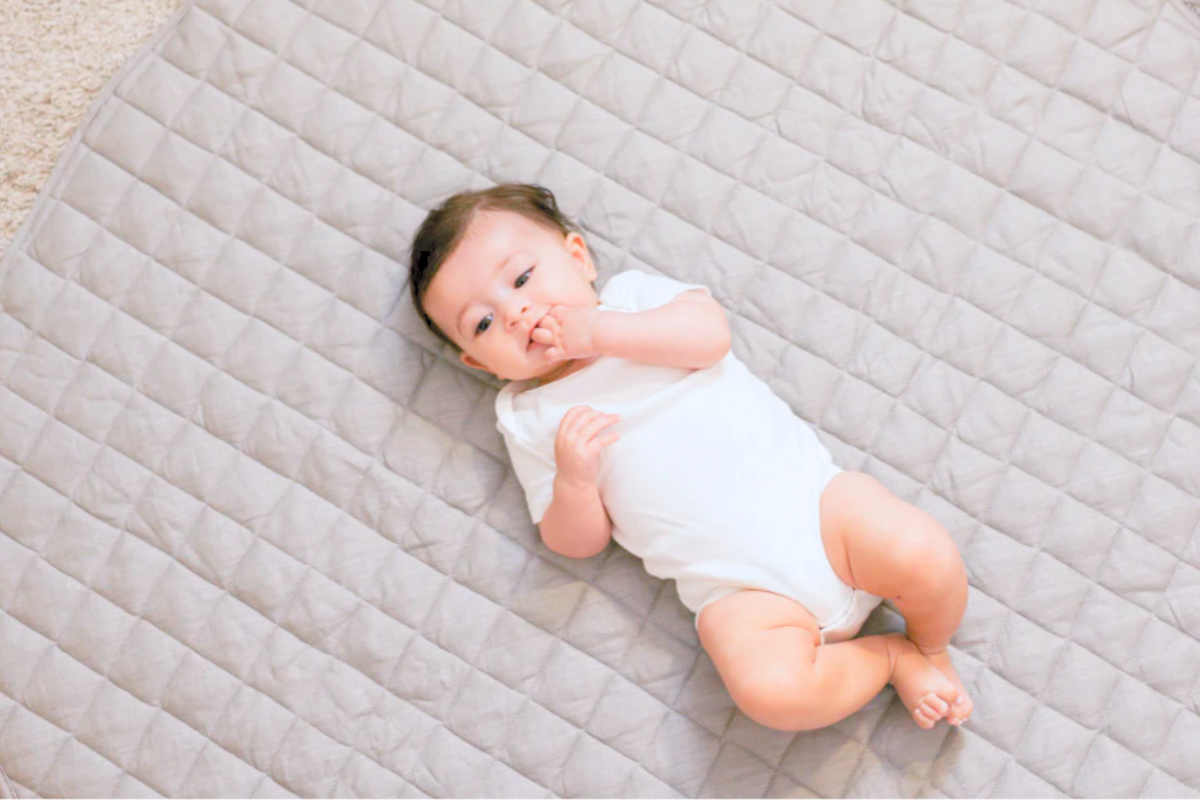
Linen Options for Baby Floor Time are a fantastic choice for parents seeking natural, breathable materials. Linen is known for its moisture-wicking properties that keep babies cool and comfortable, especially in warmer climates. With thick padding, they provide a soft, supportive surface, perfect for tummy time or playtime. Linen is also eco-friendly, so it's safe and sustainable option for your baby’s play area.
Poppyseed Play’s Linen Play Mats are a great pick and provide the perfect spot for babies who need a cozy and breathable spot for play or naps. Plus, the easy-to-clean fabric means your baby's play area stays fresh and inviting.
Soft Cotton Spaces for Tummy Time
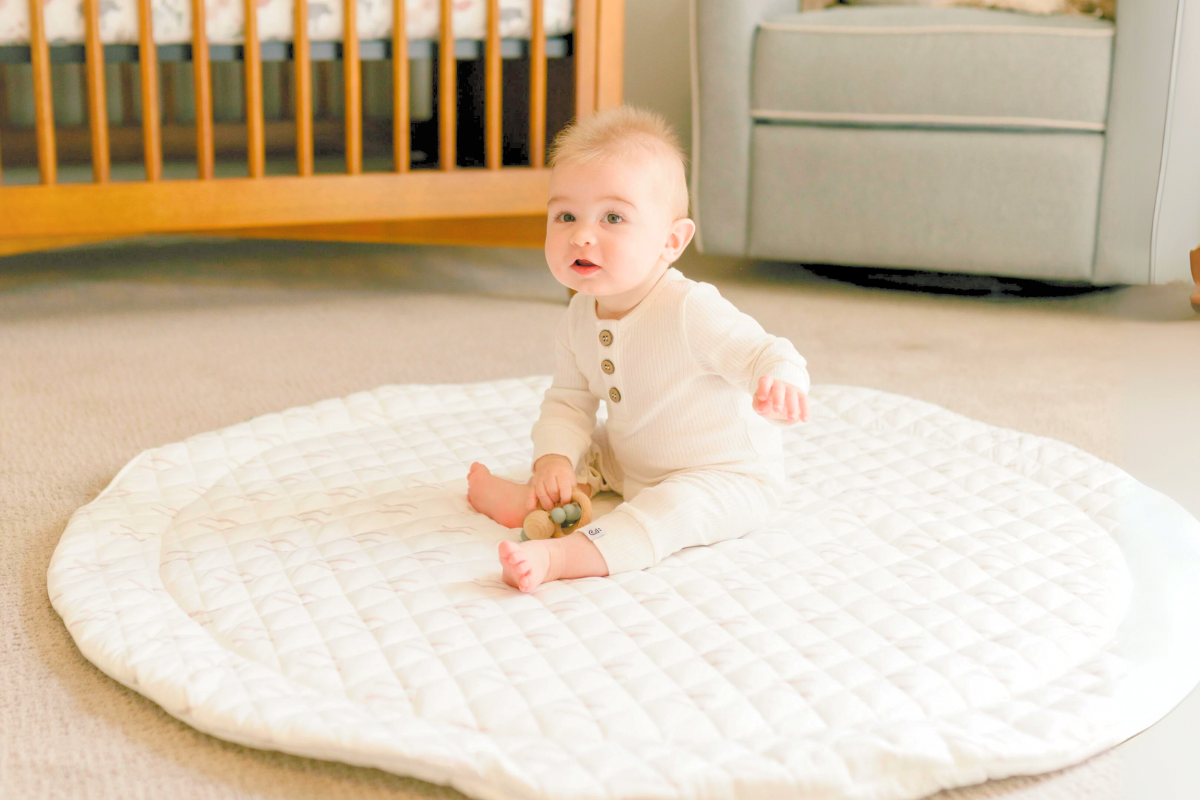
Natural Cotton Baby Floor Options are a popular choice for parents because they are soft, durable, and hypoallergenic—ideal for infants and young children with sensitive skin. They offer a gentle, comfortable surface that can handle daily use. They're also relatively easy to clean and machine washable.
Poppyseed Play’s Padded Play Mats are a great example of a high-quality extra large cotton area. With plush, triple-padded cushioning and diamond quilted stitching for added durability, these maximize play space while providing a soft, comfortable surface for tummy time and naps.
Supportive Foam Areas for Infant Play

Foam-Based Infant Activity Areas are a versatile option that can come in interlocking tiles or as a single piece. They’re soft, cushioned, and customizable, allowing you to adjust the size to fit your space. Foam play area are able to be wiped clean and provide excellent protection for both babies and your floors, making them ideal for active play.
Rubber Activity Areas for Babies

Rubber activity areas for babies are durable, shock-absorbing, and slip-resistant, making them perfect for active toddlers. They offer excellent protection during play, both indoors and outdoors. Rubber play area may also feature self-drainage channels, making them suitable for outdoor use in any weather.
Inflatable Mats
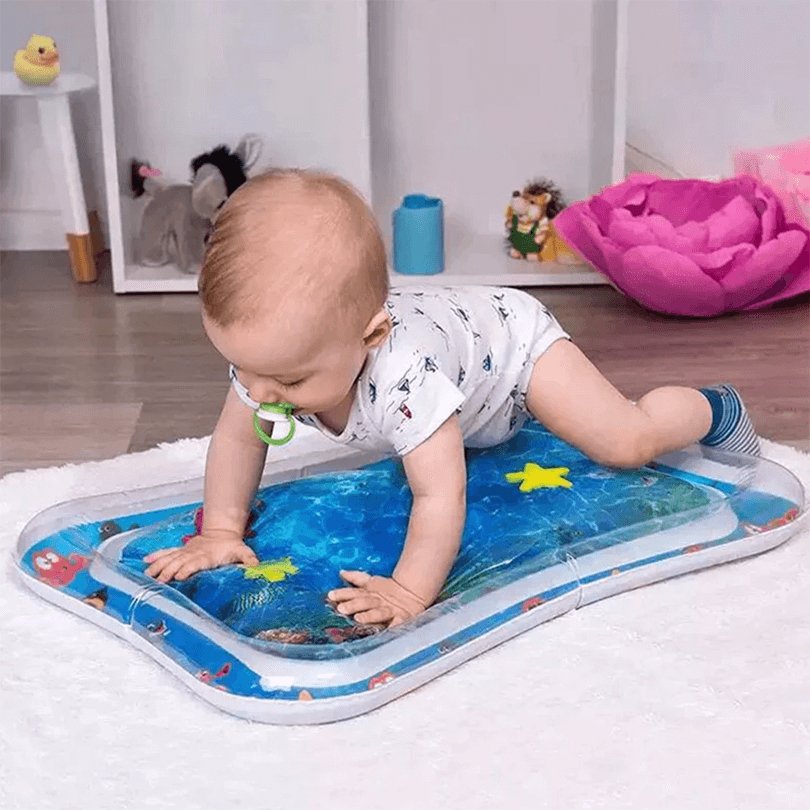
Inflatable play area are usually made from materials like PVC or vinyl. They can be either filled with air or with water, though the latter tends to be more popular. These mats cushion impacts and are popular for outdoor play areas. Their inflatable design makes them easy to transport and store when deflated.
Choosing the Right Activity Space
-
Consider the material. Opt for soft, natural, and durable materials like linen or cotton for safety and environmental benefits.
-
Check safety certifications. Make sure they meet all safety standards to keep your baby protected.
-
Select age-appropriate features. For babies under two, look for soft, padded play area with bright colors and patterns to stimulate sensory development.
-
Balance comfort and safety. Ensure the play area provides a cozy space while offering the right level of protection.
-
Focus on developmental benefits. Choose a play area that supports your child’s motor skills and overall development.
Final Thoughts
At the end of the day, a baby activity space is much more than just a soft surface—it’s our little ones' personal playground for exploration and growth. From tummy time to those first crawling moments, a well-chosen play area can really support your baby’s development.
Cotton and linen options are especially great—not only are they gentle on delicate skin, but they’re also easy to clean and naturally breathable, keeping things cozy. These early days are all about giving your baby a safe space to grow, explore, and practice those wiggly moves.
